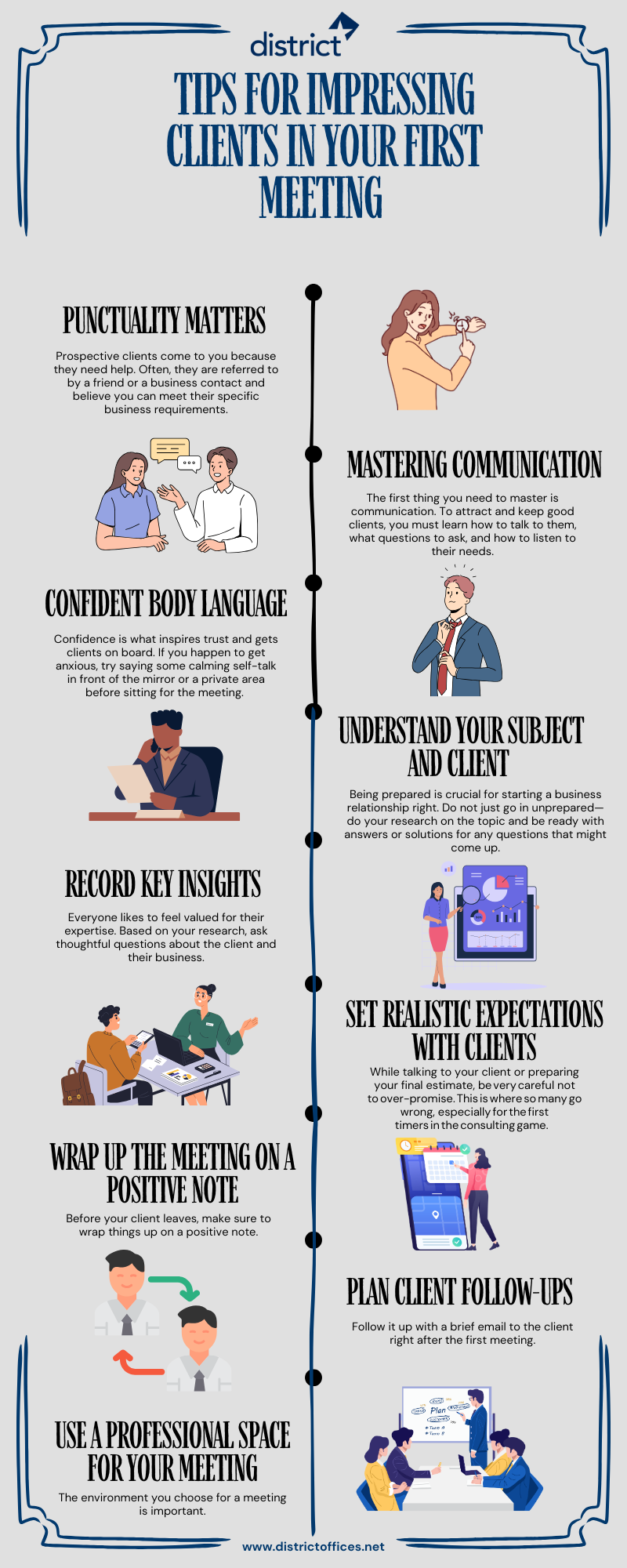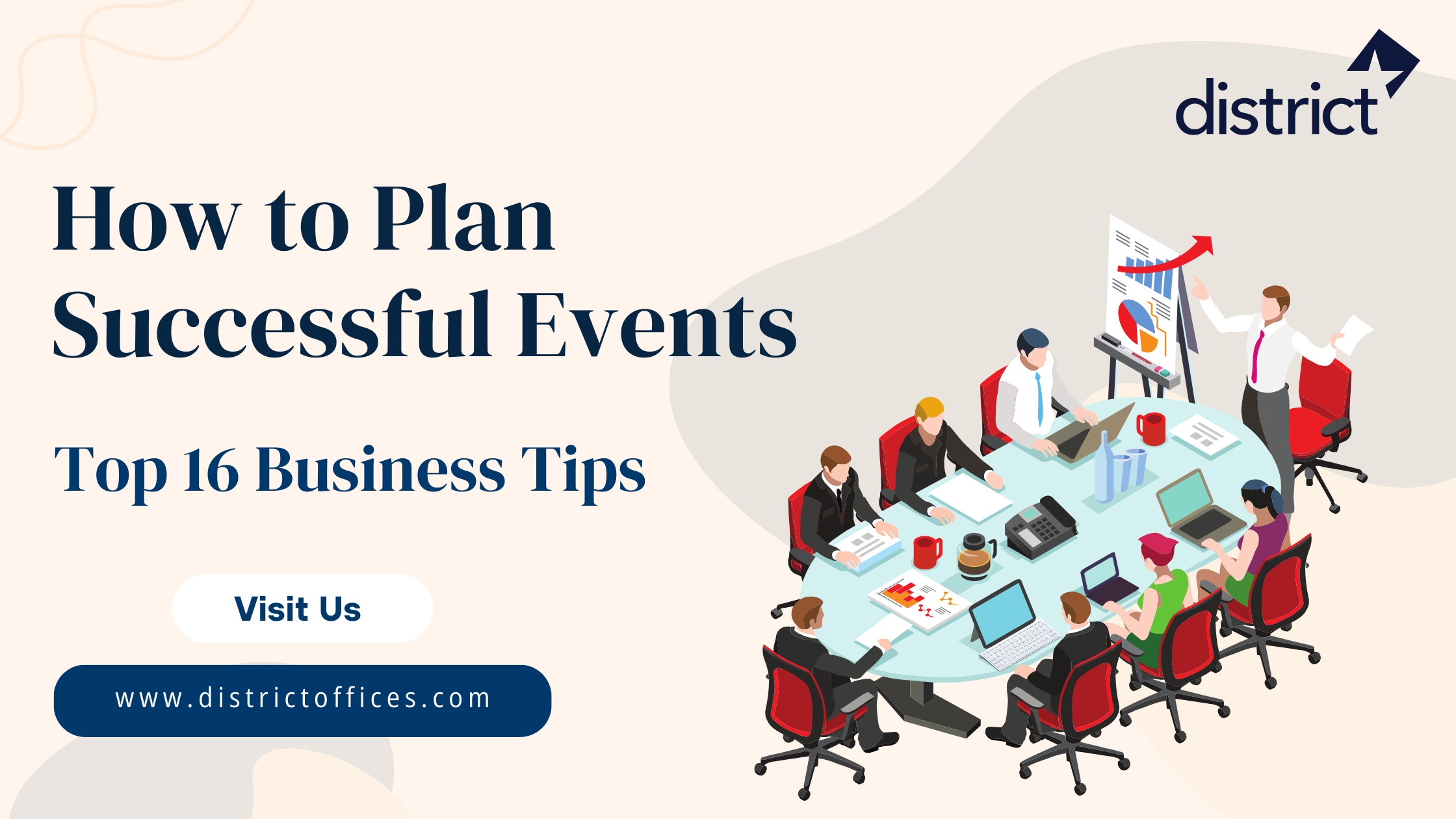If you are already working with clients, you know that building trust and respect is the most important thing. And if you’re just starting, you’ll quickly realize how crucial it is. When a possible client likes your website and is already familiar with you on the phone conversation, you have a good chance to close the deal. But now that the client wants to meet in person, this is only one step away from winning their business. Many people make judgment calls based on body language alone, so you need to be sure to present well in this meeting with a prospect.
Meeting a potential client face-to-face for the first time is always exciting. It’s a sign that your social media and website promotion has paid off and someone is willing to talk to you about your services. But before you get ahead of yourself, this doesn’t mean the deal is closed — far from it. That’s why preparing for the client meeting is so important.
In this blog, we will share some useful tips that will get you on the right path. Using these tips, you can also have a better chance of closing the deal successfully and building a strong business relationship.
Table of Contents
ToggleTips for Impressing Clients in Your First Meeting
First impressions matter a lot when meeting a new client. You want to show that you’re capable, experienced, and ready to bring value. Just follow these simple tips and make sure you are putting your best foot forward in that crucial first meeting.

1) Punctuality Matters
Prospective clients come to you because they need help. Often, they are referred to by a friend or a business contact and believe you can meet their specific business requirements. One of the best ways to show your value is to come prepared. Make sure to arrive on time—it shows you are organized and that you value your work and clients. Punctuality speaks much about an individual, so if it is not a strong point for you, it is worth improving.
2) Mastering Communication
The first thing you need to master is communication. To attract and keep good clients, you must learn how to talk to them, what questions to ask, and how to listen to their needs. The better your communication, the stronger your relationship with clients will be. And remember, they do not care about perfect grammar—they care about your work and results.
Once you have shared the basics, give your client the floor. This is your chance to understand what they want and how you can help them achieve their goals. Listen carefully and take notes. You can never have too much information, but having too little can lead to misunderstandings. Furthermore, write down any questions you want to ask once they are done speaking.
3) Confident Body Language
Confidence is what inspires trust and gets clients on board. If you happen to get anxious, try saying some calming self-talk in front of the mirror or a private area before sitting for the meeting. Get into a better mood, breathe, and stand tall with an open confident posture. As you meet your clients, you should greet them confidently, speak clearly and slowly, and make sure you look professional in attires that make you feel powerful. This will present to the world a more powerful, professional image.
4) Be Prepared: Understand Your Subject and Client
Being prepared is crucial for starting a business relationship right. Do not just go in unprepared—do your research on the topic and be ready with answers or solutions for any questions that might come up. Bring along helpful materials like printouts, models, or digital presentations to show you have put time and effort into the meeting. These tools also help you guide the conversation, keep things on track, and maintain control of the discussion.
It is just as important to know your client. Understand their business and what they need so you can focus the meeting on those areas. Knowing their challenges will help you answer questions more effectively. Take the time to build trust and connect on a personal level—this strengthens the relationship beyond just business. Also, look up your client’s background. Find out where they’ve worked, their achievements, and any recognition they’ve received. Be ready to talk about your background as well if they ask.
5) Ask Smart Questions and Record Key Insights
Everyone likes to feel valued for their expertise. Based on your research, ask thoughtful questions about the client and their business. This is a new relationship, so it is the best time to gather as much information as you can. Avoid asking basic questions that you could have easily found answers to (like, “What is your main service?”).
Focus instead on big-picture questions about their business or industry. Ask things like: What are your company’s biggest challenges? What trends are shaping your industry right now? And do not forget to take notes. Whether it is business-related or personal, write down key details. If your client shares things like family plans or preferences (like whether they prefer tea or coffee), those intricate details can help build a stronger relationship over time.
6) Set Realistic Expectations with Clients
While talking to your client or preparing your final estimate, be very careful not to over-promise. This is where so many go wrong, especially for the first timers in the consulting game.
Sometimes you feel you could do something until later you realize you are committed a great deal more than what you can do, and other times, you will find that you under-quote regarding how long it will take to complete a particular thing. The key is in good planning and honestly communicating what you can do and how long it will take.
7) Wrap Up the Meeting on a Positive Note
Before your client leaves, make sure to wrap things up on a positive note. Let them know you understand they have options and that they should choose what is best for them, even if that means not working with you. Ask if they have any more questions or anything else to discuss. Ask them to reach out if they think of something later and give them your business card. Double-check that you have their contact details such as phone number and email and ask how they prefer to communicate—whether it is by phone, text, or email. Finish the meeting with a firm handshake and thank them for their time.
8) Don’t Let the Connection Fade: Plan Client Follow-Ups
Follow it up with a brief email to the client right after the first meeting. It is your chance to show them your contact info and be enthusiastic about their possibility of work, while providing room for reminding them of any action items discussed during the meeting. It need not take more than a paragraph or two—a brief note will be enough. One meeting is not enough to make a prospect out of a client. After all, follow-ups are an excellent means by which to stay connected and at the top of people’s minds your services. Periodically follow up. You do not want to be a problem by calling them every day, but at the same time, you do not want to disappear off the face of the earth. Once per week is a good starting point during the relationship-building process.
9) Not to Forget – Use a Professional Space for Your Meeting
The environment you choose for a meeting is important. While the coffee shop or your home office might work sometimes, they are not the best options when you are meeting with a high-profile client for the first time. That is when professional meeting spaces like those at District Offices come into play. These spaces are well-designed, furnished with the latest technology, and equipped with all the amenities to bring a professional atmosphere into your work sessions. Remember, you do not get more than one chance to make a first impression, so choose a setting that works in your favor.
Also Read: The Secrets to Hosting Successful and Productive Business Meetings
Book a District Office Space for Your Next Meeting
District Offices provide a variety of professional meeting spaces in Washington D.C.’s most sought-after areas. From high-end private offices to tech-forward board and meeting rooms, we can ensure that your next meeting happens in the elevated and professional environment that your work – and clients – deserve. For information about reserving one of our meeting spaces or claiming a desk at one of our highly regarded addresses, get in touch with us today.
The Bottom Line
When meeting a potential client, you want your first impression to be a positive one, not the last. It is worth taking a little extra time to prepare, stay organized, and show that you care about their needs. A great business relationship starts with a strong first meeting, so be ready to impress. Mastering a successful client meeting is crucial for building lasting business relationships. By using the tips above, you will be well on your way to leaving a positive impression and winning over potential clients. Show up prepared, excited, and confident. If everything goes well, they should follow up in the next few days, and you will have a new client to work with. All the best!
Also Read: Ways to Impress During Your First Meeting with a New Client
FAQs (Frequently Asked Questions)
1) How can you prepare for a successful first meeting with a client?
To prepare for a successful client meeting, do your research on the client’s business, understand their challenges, and bring relevant materials or presentations. Make sure you are organized and ready to answer their questions, while also listening carefully to understand their needs.
2) Why is it important to make a strong first impression with clients?
The first impression is especially important because it has the tone of the entire business relationship. Being punctual, confident, and prepared is what conveys a message to clients that one is professional, reliable, and invested in their success.
3) What should you focus on during my first meeting with a potential client?
During your first meeting, focus on building rapport, actively listening to the client’s needs, and asking insightful questions that show you understand their business challenges. Offer clear solutions and demonstrate how you can add value.
4) How often should you follow up with a client after our first meeting?
Follow up within a few days with a brief thank-you email, summarizing key points discussed and the next steps. After that, you should aim to check in once a week to keep the communication flowing without being oppressive.




















